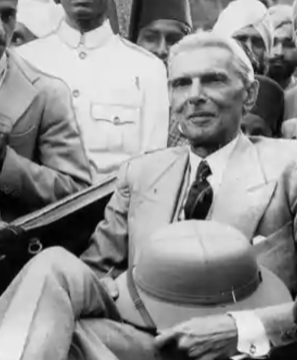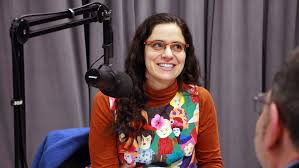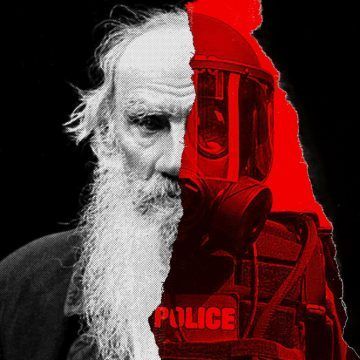Category: Recommended Reading
Why M.A. Jinnah was a man of many contradictions
Salil Tripathi in LiveMint:
 The peculiarity of hindsight is that it depends on the point from which you look back at Pakistan’s and India’s trajectories. In the early 1970s and till the late 1990s, as Pakistan itself broke up into two and generals and mullahs controlled its politics, India could afford to be smug. In 1992, the destruction of the Babri Masjid changed that, and the consequences of India’s 2014 election are there for us to see. Some Pakistanis may feel triumphant, but the virtue of Pakistani lawyer Yasser Latif Hamdani’s new biography, Jinnah: A Life, is that it takes a sober tone.
The peculiarity of hindsight is that it depends on the point from which you look back at Pakistan’s and India’s trajectories. In the early 1970s and till the late 1990s, as Pakistan itself broke up into two and generals and mullahs controlled its politics, India could afford to be smug. In 1992, the destruction of the Babri Masjid changed that, and the consequences of India’s 2014 election are there for us to see. Some Pakistanis may feel triumphant, but the virtue of Pakistani lawyer Yasser Latif Hamdani’s new biography, Jinnah: A Life, is that it takes a sober tone.
In clear, if not sparkling, prose, Hamdani, an admirer of Jinnah, offers a nuanced perspective of the man who began as an ambassador of Hindu-Muslim unity and ended up being instrumental in dividing India along religious lines. The book adds to the growing body of literature around Jinnah, building on the work of Stanley Wolpert, regarded as the most important biography till Ayesha Jalal’s detailed and absorbing biography, and the indifferent book by former BJP minister Jaswant Singh, which gained notoriety for all the wrong reasons.
More here.
Elizabeth Bishop: Selected Poems
Love Unknown: The Life and Worlds of Elizabeth Bishop
Marian Janssen at berfrois:
 Bishop published only about a hundred poems during her lifetime, but won the most prestigious prizes for American literature: the Pulitzer in 1956 and the National Book Award in 1970. Brilliant, quirky critic Randall Jarrell described her poems as “honest, modest, minutely observant, masterly. . . . The poems are like Vuillard or even, sometimes, Vermeer.” Bishop was overwhelmed: “It has always been one of my dreams that someday someone would think of Vermeer, without my saying it first”—adding cheerfully, “So now I think I can die in a fairly peaceful frame of mind any old time.” Her life was tumultuous and tragic, but also filled with love and lust. Bishop’s father died when she was only a few months old, a loss her mother, mentally unstable Gertrude Bulmer, never overcame. Her loving, but simple, maternal grandparents raised Bishop in Great Village, a hamlet in Nova Scotia, Canada, during her infancy, while Bulmer was locked up in an insane asylum for long periods. When Bishop was five years old, Bulmer was put away forever, mostly in solitary confinement. She would never see her mother again. Soon after, suddenly, her father’s parents took her to Worcester, Massachusetts, and Bishop ended up in a world that was less austere, but much colder and more distant. Lonely and alone, she was plagued by terrible asthma and eczema; Travisano convincingly argues that these had psychosomatic origins.
Bishop published only about a hundred poems during her lifetime, but won the most prestigious prizes for American literature: the Pulitzer in 1956 and the National Book Award in 1970. Brilliant, quirky critic Randall Jarrell described her poems as “honest, modest, minutely observant, masterly. . . . The poems are like Vuillard or even, sometimes, Vermeer.” Bishop was overwhelmed: “It has always been one of my dreams that someday someone would think of Vermeer, without my saying it first”—adding cheerfully, “So now I think I can die in a fairly peaceful frame of mind any old time.” Her life was tumultuous and tragic, but also filled with love and lust. Bishop’s father died when she was only a few months old, a loss her mother, mentally unstable Gertrude Bulmer, never overcame. Her loving, but simple, maternal grandparents raised Bishop in Great Village, a hamlet in Nova Scotia, Canada, during her infancy, while Bulmer was locked up in an insane asylum for long periods. When Bishop was five years old, Bulmer was put away forever, mostly in solitary confinement. She would never see her mother again. Soon after, suddenly, her father’s parents took her to Worcester, Massachusetts, and Bishop ended up in a world that was less austere, but much colder and more distant. Lonely and alone, she was plagued by terrible asthma and eczema; Travisano convincingly argues that these had psychosomatic origins.
more here.
Writing and Academia
Agnes Callard at The Point:
 In making these claims about academic writing, I am thinking in the first instance of my own corner of academia—philosophy—though I suspect that my points generalize, at least over the academic humanities. To offer up one anecdote: in spring 2019 I was teaching Joyce’s Portrait of the Artist as a Young Man; since I don’t usually teach literature, I thought I should check out recent secondary literature on Joyce. What I found was abstruse and hypercomplex, laden with terminology and indirect. I didn’t feel I was learning anything I could use to make the meaning of the novel more accessible to myself or to my students. I am willing to take some of the blame here: I am sure I could have gotten something out of those pieces if I had been willing to put more effort into reading them. Still, I do not lack the intellectual competence required to understand analyses of Joyce; I feel all of those writers could have done more to write for me.
In making these claims about academic writing, I am thinking in the first instance of my own corner of academia—philosophy—though I suspect that my points generalize, at least over the academic humanities. To offer up one anecdote: in spring 2019 I was teaching Joyce’s Portrait of the Artist as a Young Man; since I don’t usually teach literature, I thought I should check out recent secondary literature on Joyce. What I found was abstruse and hypercomplex, laden with terminology and indirect. I didn’t feel I was learning anything I could use to make the meaning of the novel more accessible to myself or to my students. I am willing to take some of the blame here: I am sure I could have gotten something out of those pieces if I had been willing to put more effort into reading them. Still, I do not lack the intellectual competence required to understand analyses of Joyce; I feel all of those writers could have done more to write for me.
more here.
How the Pandemic Defeated America
Ed Yong in The Atlantic:

Despite ample warning, the U.S. squandered every possible opportunity to control the coronavirus. And despite its considerable advantages—immense resources, biomedical might, scientific expertise—it floundered. While countries as different as South Korea, Thailand, Iceland, Slovakia, and Australia acted decisively to bend the curve of infections downward, the U.S. achieved merely a plateau in the spring, which changed to an appalling upward slope in the summer. “The U.S. fundamentally failed in ways that were worse than I ever could have imagined,” Julia Marcus, an infectious-disease epidemiologist at Harvard Medical School, told me.
Since the pandemic began, I have spoken with more than 100 experts in a variety of fields. I’ve learned that almost everything that went wrong with America’s response to the pandemic was predictable and preventable. A sluggish response by a government denuded of expertise allowed the coronavirus to gain a foothold. Chronic underfunding of public health neutered the nation’s ability to prevent the pathogen’s spread. A bloated, inefficient health-care system left hospitals ill-prepared for the ensuing wave of sickness. Racist policies that have endured since the days of colonization and slavery left Indigenous and Black Americans especially vulnerable to COVID‑19. The decades-long process of shredding the nation’s social safety net forced millions of essential workers in low-paying jobs to risk their life for their livelihood. The same social-media platforms that sowed partisanship and misinformation during the 2014 Ebola outbreak in Africa and the 2016 U.S. election became vectors for conspiracy theories during the 2020 pandemic.
More here.
Whence Came Stonehenge’s Stones? Now We Know
Franz Lidz in The New York Times:
 Back in the ’30s — the 1130s — the Welsh cleric Geoffrey of Monmouth created the impression that Stonehenge was built as a memorial to a bunch of British nobles slain by the Saxons. In his “Historia Regum Britanniae,” Geoffrey tells us that Merlin, the wizard of Arthurian legend, was enlisted to move a ring of giant mystical stones from Mount Killaraus in Ireland to what is commonly believed to be Salisbury Plain, a chalk plateau in southern England, where Stonehenge is located. Back in the ’50s — the 1950s — a chunk of rock went missing from the magical tumble of megaliths that now compose Stonehenge. The chunk, a three-and-a-half-foot cylindrical core, had been drilled out of one of the site’s massive sarsen stones during repairs and taken home by an employee of the diamond-cutting firm that carried out the work. The core, recently repatriated after 60 years, turned out to be pivotal to an academic paper published on Wednesday in the journal Science Advances. The study pinpointed the source of the sarsens, a mystery that has long bedeviled geologists and archaeologists.
Back in the ’30s — the 1130s — the Welsh cleric Geoffrey of Monmouth created the impression that Stonehenge was built as a memorial to a bunch of British nobles slain by the Saxons. In his “Historia Regum Britanniae,” Geoffrey tells us that Merlin, the wizard of Arthurian legend, was enlisted to move a ring of giant mystical stones from Mount Killaraus in Ireland to what is commonly believed to be Salisbury Plain, a chalk plateau in southern England, where Stonehenge is located. Back in the ’50s — the 1950s — a chunk of rock went missing from the magical tumble of megaliths that now compose Stonehenge. The chunk, a three-and-a-half-foot cylindrical core, had been drilled out of one of the site’s massive sarsen stones during repairs and taken home by an employee of the diamond-cutting firm that carried out the work. The core, recently repatriated after 60 years, turned out to be pivotal to an academic paper published on Wednesday in the journal Science Advances. The study pinpointed the source of the sarsens, a mystery that has long bedeviled geologists and archaeologists.
Although the project did not identify the specific spot where the stones came from, Mike Pitts, editor of the magazine British Archaeology, believes that the discovery makes the search for sarsen quarries a realistic option. “If we can find them, we could learn about how they were dressed and moved, and importantly we might be able to date that activity,” he said. “Dating matters, because then we can say what else was present in the landscape at the same time, what was old or gone and what was still to come — other sites are better dated — and of course who actually built the thing.”
More here.
Tuesday Poem
The Invention of the Saxophone
It was Adolphe Sax, remember,
not Saxo Grammaticus, who gets the ovation.
And by the time he had brought all the components
together–the serpentine shape, the single reed,
the fit of the fingers,
the upward tilt of the golden bell–
it was already 1842, and one gets the feeling
that it was also very late at night.
There is something nocturnal about the sound,
something literally horny,
as some may have noticed on that historic date
when the first odd notes wobbled out of his studio
into the small, darkened town,
summoning the insomniacs (who were up
waiting for the invention of jazz) to their windows,
but leaving the sleepers undisturbed,
evening deepening and warming the waters of their dreams.
For this is not the valved instrument of waking,
more the smoky voice of longing and loss,
the porpoise cry of the subconscious.
No one would ever think of blowing reveille
on a tenor without irony.
The men would only lie in their metal bunks,
fingers twined behind their heads,
afloat on pools of memory and desire.
And when the time has come to rouse the dead,
you will not see Gabriel clipping an alto
around his numinous neck.
An angel playing the world’s last song
on a glistening saxophone might be enough
to lift them back into the light of earth,
but really no further.
Once resurrected, they would only lie down
in the long cemetery grass
or lean alone against a lugubrious yew
and let the music do the ascending–
curling snakes charmed from their baskets–
while they wait for the shrill trumpet solo,
that will blow them all to kingdom come.
by Billy Collins
from The Art of Drowning
University of Pittsburgh Press, 1995
Sunday, August 2, 2020
Climate Change’s New Ally: Big Finance
Madison Condon in the Boston Review:
 Over the past two years a striking change has taken place in the boardrooms of greenhouse-gas producers: a growing number of large companies have announced commitments to achieve “net zero” emissions by 2050. These include the oil majors BP, Shell, and Total, the mining giant Rio Tinto, and the electricity supplier Southern Company. While such commitments are often described as “voluntary”—not mandated by government regulation—they were often adopted begrudgingly by executives and boards acquiescing to demands made by a coordinated group of their largest shareholders.
Over the past two years a striking change has taken place in the boardrooms of greenhouse-gas producers: a growing number of large companies have announced commitments to achieve “net zero” emissions by 2050. These include the oil majors BP, Shell, and Total, the mining giant Rio Tinto, and the electricity supplier Southern Company. While such commitments are often described as “voluntary”—not mandated by government regulation—they were often adopted begrudgingly by executives and boards acquiescing to demands made by a coordinated group of their largest shareholders.
This group, Climate Action 100+, is an association of many of the world’s largest institutional investors. With over 450 members, it manages a staggering $40 trillion in assets—roughly 46 percent of global GDP. Founded in 2017, the coalition initially was made up mostly of pension funds and European asset managers, but its ranks have grown rapidly, and last winter both J.P. Morgan and BlackRock (the world’s largest asset manager) became signatories to the association’s pledge to pressure portfolio companies to reduce emissions and disclose financial risks related to climate change.
More here.
Astrophysicists observe long-theorized quantum phenomena
Bysaralyn Cruickshank in Phys.org:
 At the heart of every white dwarf star—the dense stellar object that remains after a star has burned away its fuel reserve of gases as it nears the end of its life cycle—lies a quantum conundrum: as white dwarfs add mass, they shrink in size, until they become so small and tightly compacted that they cannot sustain themselves, collapsing into a neutron star.
At the heart of every white dwarf star—the dense stellar object that remains after a star has burned away its fuel reserve of gases as it nears the end of its life cycle—lies a quantum conundrum: as white dwarfs add mass, they shrink in size, until they become so small and tightly compacted that they cannot sustain themselves, collapsing into a neutron star.
This puzzling relationship between a white dwarf’s mass and size, called the mass-radius relation, was first theorized by Nobel Prize-winning astrophysicist Subrahmanyan Chandrasekhar in the 1930s. Now, a team of Johns Hopkins astrophysicists has developed a method to observe the phenomenon itself using astronomical data collected by the Sloan Digital Sky Survey and a recent dataset released by the Gaia Space Observatory. The combined datasets provided more than 3,000 white dwarfs for the team to study.
More here.
The Fiction of Winners & Losers
Tim Parks in the New York Review of Books:
 Am I being reductive? All of narrative fiction, I’ve suggested, can be sorted into four grand categories. Each presents a rich world of feeling in which any number of stories can be told and positions established, but always in relation to, or rather, driven by, a distinct cluster of values and consequent emotions. My claim is that it really is worth being aware which of these worlds we are being drawn into. We read better. We know where we are. And what the dangers are.
Am I being reductive? All of narrative fiction, I’ve suggested, can be sorted into four grand categories. Each presents a rich world of feeling in which any number of stories can be told and positions established, but always in relation to, or rather, driven by, a distinct cluster of values and consequent emotions. My claim is that it really is worth being aware which of these worlds we are being drawn into. We read better. We know where we are. And what the dangers are.
Where did I get this idea? The novelist and critic Raymond Williams, whose lectures I attended years ago, used to speak with fascination of the identical “structures of feeling” that he came across in quite different books. “It was a structure in the sense that you could perceive it operating in one work after another which weren’t otherwise connected—people weren’t learning it from each other; yet it was one of feeling much more than of thought—a pattern of impulses, restraints, tones.”
The discipline of systemic psychology, which owed a great deal to the work of the anthropologist Gregory Bateson, elaborated similar ideas: families, communities, individuals could be understood in relation to distinct value systems. In her influential work Permitted and Forbidden Stories, the Italian psychologist Valeria Ugazio identifies four: the first three correspond more or less to the three kinds of fiction I’ve explored: stories focused on the characters’ relations to the community (belonging), around conflicts between indulgence and renunciation (goodness), around a tension between the craving to be free and a need to feel protected (liberty). And the fourth?
More here.
The Futility of the Conservative War on Pornography
Christopher J. Ferguson in Quillette:
 As we head into a tumultuous US election season, it is worth remembering that political parties can get trapped in partisan frameworks that cater to the loudest sections of their base, but which prevent them from appealing to a wider range of voters. Ideological litmus tests not only narrow appeal, but they cause politicians to pander, to disregard evidence, and to reject compromise in favor of rhetorical stridency. Social conservatives’ endlessly sputtering crusade over pornography is unusual in that it brings them into alliance with many radical feminists on the Left. Nevertheless, of the two main parties, it is the moral majoritarians in the Republican Party who have most frequently attempted to generate political capital by inveighing against pornography. This movement’s foundational moment was President Reagan’s Meese commission established to investigate the potential harms caused by pornography. The Meese Report, however, badly over-reached—even those who worry about the effects of pornography acknowledge it made unsubstantiated claims about its effects. Recent US presidential election years have seen promises to strengthen anti-pornography laws included as part of the Republican national platform. Sixteen US states, mostly conservative leaning, have now declared pornography to be a public health crisis
As we head into a tumultuous US election season, it is worth remembering that political parties can get trapped in partisan frameworks that cater to the loudest sections of their base, but which prevent them from appealing to a wider range of voters. Ideological litmus tests not only narrow appeal, but they cause politicians to pander, to disregard evidence, and to reject compromise in favor of rhetorical stridency. Social conservatives’ endlessly sputtering crusade over pornography is unusual in that it brings them into alliance with many radical feminists on the Left. Nevertheless, of the two main parties, it is the moral majoritarians in the Republican Party who have most frequently attempted to generate political capital by inveighing against pornography. This movement’s foundational moment was President Reagan’s Meese commission established to investigate the potential harms caused by pornography. The Meese Report, however, badly over-reached—even those who worry about the effects of pornography acknowledge it made unsubstantiated claims about its effects. Recent US presidential election years have seen promises to strengthen anti-pornography laws included as part of the Republican national platform. Sixteen US states, mostly conservative leaning, have now declared pornography to be a public health crisis
This ideological obsession with pornography is bad for conservatives for several reasons. First, evidence linking pornography to negative outcomes is weak. Second, it’s an easy issue to lampoon because, notwithstanding conservatives’ expressed outrage about pornography, it is actually more popular in conservative enclaves. And third, producers of pornography involving consenting adults are protected by the First Amendment, so there’s little hope of satisfying constituents’ desire for its suppression.
More here.
John Saxon (1936 – 2020)
https://www.youtube.com/watch?v=5xle91WTCWE
Malik B. (1972 – 2020)
Bent Fabric (1924 – 2020)
Onward, Christian Cowboys
Matt Hanson in The Baffler:
 THE LATE, GREAT COMEDIAN Bill Hicks liked to tell a story about how audiences responded to his brand of scathing, gleefully subversive comedy, which he once referred to as “Chomsky with dick jokes.” Hicks’s relentless skewering of American materialism, jingoism, and religious hypocrisy didn’t exactly endear him to the mainstream. An appearance on the Letterman show was infamously cut—it was taped, but not aired—for containing jokes about pro-lifers, who were among the show’s sponsors. After a set in Tennessee, the story goes, a couple of locals confronted the Texas-born comic and declared that they were Christians and they didn’t like his act. Without missing a beat, Hicks responded with “well then, forgive me.” Instead, they broke his arm.
THE LATE, GREAT COMEDIAN Bill Hicks liked to tell a story about how audiences responded to his brand of scathing, gleefully subversive comedy, which he once referred to as “Chomsky with dick jokes.” Hicks’s relentless skewering of American materialism, jingoism, and religious hypocrisy didn’t exactly endear him to the mainstream. An appearance on the Letterman show was infamously cut—it was taped, but not aired—for containing jokes about pro-lifers, who were among the show’s sponsors. After a set in Tennessee, the story goes, a couple of locals confronted the Texas-born comic and declared that they were Christians and they didn’t like his act. Without missing a beat, Hicks responded with “well then, forgive me.” Instead, they broke his arm.
You might think reacting in such a spirit of vengeance is pretty much the exact opposite of how any self-professed Christian is supposed to behave. Yet there were deeper and more distinctly American pathologies at work: the guys who supposedly beat up Hicks were responding politically, not theologically. It wasn’t an attempt to defend Jesus’ honor or the tenets of whatever church they might have belonged to—it was to show that little punk who was really boss. They probably didn’t even notice the irony; and why would they? They may have grown up in an evangelical culture, but that culture glorifies what we now refer to as toxic masculinity. This “muscular Christianity” encourages both aggression and victimhood, emboldening believers, especially men, to impose their collective will on the rest of the public whenever they suddenly feel empowered or aggrieved.
In Jesus & John Wayne: How White Evangelicals Corrupted A Faith and Fractured a Nation the historian Kristin Kobes Du Mez explores this moral schizophrenia. We know there are legions of people on the religious right who talk a good game about following Christ but end up voting overwhelmingly for venal, crass, blustering wannabe tough guys like the current president and his enablers in Congress. But much of the evangelical leadership is this way, too. It often consists of self-appointed alpha male types who write bestselling books with imposing titles like Dare to Discipline, and Never Surrender, and You: The Warrior Leader, and Why We [meaning Muslims, of course] Want to Kill You. A writer for the Christian Broadcasting Network even teamed up with a Baptist minister a couple of years ago to produce The Faith of Donald J. Trump: A Spiritual Biography. While trying to mimic the terse, stoic cowboy ideal of manhood nicked from old Western movies, these opportunistic showboats often end up sounding and acting a lot more like Tom Cruise’s Frank T.J. Mackie in Magnolia, the brash misogynist who gives conferences about how to seduce and destroy women and who turns out to be a basket case of Oedipal rage and self-loathing.
The use of John Wayne as an evangelical role model implicitly suggests how some people’s religious beliefs are akin to identifying with their favorite movie stars.
More here.
Leo Tolstoy vs. the Police
Jennifer Wilson in The New York Times:
 Tolstoy was drawn to seekers, to characters perpetually in the throes of spiritual crisis; George Orwell described them as figures “struggling to make their souls.” Indeed, Tolstoy saw emergencies, personal and social, as necessary ruptures that could spark a deeper questioning of society and the beliefs that supported it. Of his own spiritual reawakening, captured in his memoir “A Confession” (1882), he described feeling as though the ground beneath him had collapsed. It is no wonder, then, that readers are finding new urgency in his work at a time when the racial and economic inequities revealed by Covid-19 and police killings have inspired unprecedented numbers of people to begin questioning some of this country’s foundational myths. With calls to defund the police, many are asking, for the first time in their lives, not just how our institutions function but whether they should exist at all.
Tolstoy was drawn to seekers, to characters perpetually in the throes of spiritual crisis; George Orwell described them as figures “struggling to make their souls.” Indeed, Tolstoy saw emergencies, personal and social, as necessary ruptures that could spark a deeper questioning of society and the beliefs that supported it. Of his own spiritual reawakening, captured in his memoir “A Confession” (1882), he described feeling as though the ground beneath him had collapsed. It is no wonder, then, that readers are finding new urgency in his work at a time when the racial and economic inequities revealed by Covid-19 and police killings have inspired unprecedented numbers of people to begin questioning some of this country’s foundational myths. With calls to defund the police, many are asking, for the first time in their lives, not just how our institutions function but whether they should exist at all.
One of Tolstoy’s seekers who found himself on such a path is Ivan Vassilievich, the protagonist of his 1903 short story “After the Ball.” Ivan is a young society man who falls in love with the daughter of a colonel, and plans to enlist himself until a fateful early-morning walk. He has spent the previous night at a ball in town, dancing with the daughter, a “bony” young beauty named Varenka: “Though I was a fancier of champagne,” he reflects, “I did not drink, because, without any wine, I was drunk with love.” However, Ivan falls as much in love with Varenka’s father, a kind and gentle-seeming man, who, Ivan tenderly notes, wears plain boots to the ball because he prefers to spend all his extra money on his daughter. After the ball, Ivan returns home, but is still so full of enchantment that he cannot sleep.
Instead, he takes a walk across the snowy streets in the direction of Varenka’s home, but when he arrives, he encounters a confounding scene: “Soldiers in black uniforms were standing in two rows facing each other, holding their guns at their sides and not moving. Behind them stood the drummer and fifer, ceaselessly repeating the same unpleasant, shrill melody.” It is a military gantlet and the accused, a young Tatar officer (Tatars were an ethnic minority in Russia), is being punished for desertion. Ivan looks on, frozen, as the young man’s body becomes bloodied: “His whole body jerking, his feet splashing through the melting snow, the punished man moved toward me under a shower of blows.” Ivan sees that the colonel leading the procession is none other than Varenka’s father, the man he thought of only hours before as loving and warm.
More here.
Saturday, August 1, 2020
Rules of the Game?
 Lorna Finlayson in the New Left Review:
Lorna Finlayson in the New Left Review:
Katrina Forrester’s In the Shadow of Justice approaches Rawls’s work from the perspective of an intellectual historian. Her central thesis is that Rawls should be seen not as a philosopher of the 1960s—the era of Vietnam and of Lyndon Johnson’s ‘Great Society’—but rather as a thinker of the America of the 1940s and 50s. In those years, liberals sceptical of the interventionism of the administrative state saw their task as that of ‘securing the values of freedom and equality without the state intervention and political control that decades of state expansion had made a new norm’. On his return to Princeton in 1946 after three years’ combat in the Pacific War, the young Rawls embraced a ‘barebones’ anti-statism, close to that of Hayek or Walter Lippmann. In particular, Forrester demonstrates the importance for him of Frank Knight’s Ethics of Competition (1935): Rawls underlined his personal copy in three different pens and drew from the work of Knight and others the key idea of the game and its consensual rules as a social model. From Lippmann’s The Good Society (1937) he borrowed the analogy of the highway code—consensual regulation of the flow of traffic benefited all drivers, regardless of where they were going—widely used by early ordo- and neo-liberals. The heuristic device of the discussion between ‘reasonable men’—‘average, rational, right-thinking and fair’ heads of households—was already present in his 1949 doctoral thesis on ethical knowledge.
More here.
Bugs Rule
‘Why Didn’t You Just Do What You Were Told?’ by Jenny Diski
Kate Kellaway at The Guardian:
 In her introduction, Mary-Kay Wilmers, editor of the LRB, writes: “One of the pleasures of reading Jenny Diski, especially the essays, is that pleasure is such a large part of it.” Diski was worth hiring on any subject: feed her base metal, she turned it into gold. When not writing about herself, she is at her best considering the nasty and/or nondescript. Her subjects include Jeffrey Dahmer, Howard Hughes and Richard Branson, and she does not let Christine Keeler get away with a stuffy, faux-respectable take on her past. It is only because she has forced her way through “every damn word” of Keith Richards’s coarsely self-serving autobiography (in which he reveals Mick Jagger has a “tiny todger”) that she is determined to go ahead with her review. She is the most undeceived of writers – and surprising. Who else would combine reviewing a biography of Denis Thatcher with a reading of Melville’s Moby-Dick?
In her introduction, Mary-Kay Wilmers, editor of the LRB, writes: “One of the pleasures of reading Jenny Diski, especially the essays, is that pleasure is such a large part of it.” Diski was worth hiring on any subject: feed her base metal, she turned it into gold. When not writing about herself, she is at her best considering the nasty and/or nondescript. Her subjects include Jeffrey Dahmer, Howard Hughes and Richard Branson, and she does not let Christine Keeler get away with a stuffy, faux-respectable take on her past. It is only because she has forced her way through “every damn word” of Keith Richards’s coarsely self-serving autobiography (in which he reveals Mick Jagger has a “tiny todger”) that she is determined to go ahead with her review. She is the most undeceived of writers – and surprising. Who else would combine reviewing a biography of Denis Thatcher with a reading of Melville’s Moby-Dick?
more here.
